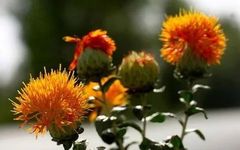Properties and Channels
Spicy, warm. Enters the Heart and Liver channels.
Functions and Indications
Activates blood and regulates menstruation, disperses stasis and alleviates pain. Used for amenorrhea, dysmenorrhea, retained lochia, abdominal masses, chest pain, abdominal pain due to stasis, stabbing pain in the chest and hypochondria, trauma from falls, and painful sores.
Dosage and Administration
Internal use: decoction, 3-6 grams; can be used in powders or tinctures, fresh ones can be juiced.
External use: ground into powder and sprinkled.
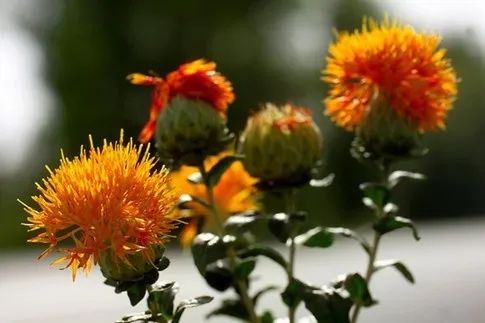
Precautions
Contraindicated in pregnant women.
Source
This herb is the dried flower of the Asteraceae plant, Carthamus tinctorius L. The flowers are harvested in summer when they change from yellow to red, then dried in the shade or sun. It is cultivated in many regions across the country, mainly produced in Henan, Zhejiang, and Sichuan provinces.
Characteristics
The product consists of tubular flowers without ovaries, measuring 1-2 cm in length. The surface is reddish-yellow or red. The corolla tube is elongated, with 5 lobes at the tip, and the lobes are narrow and 5-8 mm long; there are 5 stamens, and the anthers are fused into a tubular shape, yellowish-white; the stigma is long and cylindrical, with a slightly bifurcated tip. The texture is soft. It has a faint fragrance and a slightly bitter taste.
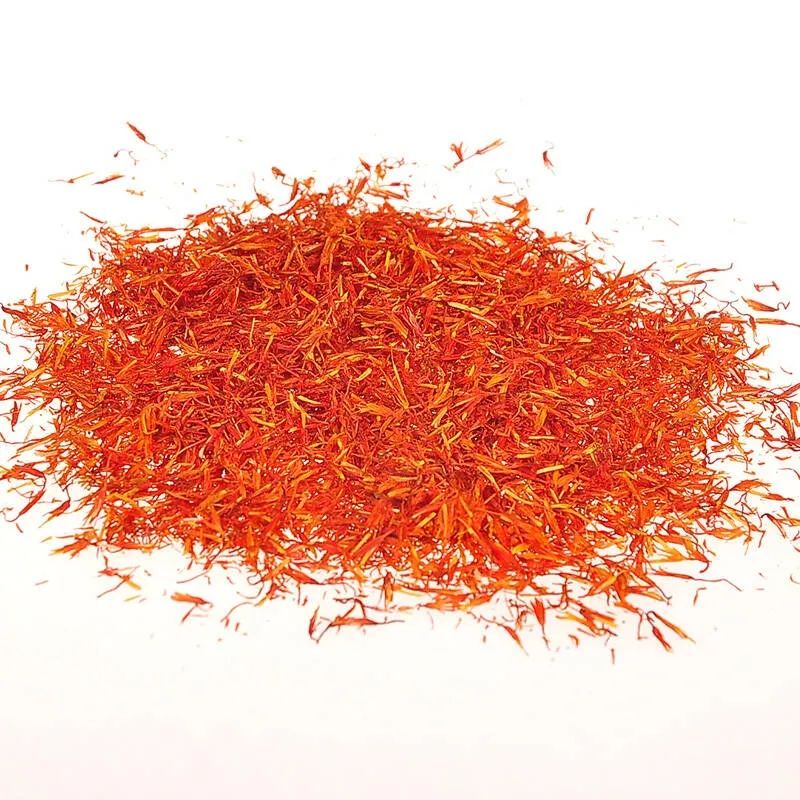
Formulas
1. For women’s menstrual obstruction, such as blood stasis: Honghua (Carthamus tinctorius) (finely chopped), Su Fang Mu (Syringa vulgaris) (crushed), and Dang Gui (Angelica sinensis) in equal parts. Finely chop, use 30 grams, add 1.5 liters of water, first decoct the flower and wood, then add 1 cup of wine and Dang Gui, decoct again, and take warm before meals. (From “Zhu’s Collection of Verified Medical Formulas”)
2. For heat disease causing fetal death: decoct the juice of Honghua in wine, drink 2-3 cups. (From “Women’s Good Remedies Supplement”)
3. For retained placenta: decoct the juice of Honghua in wine, drink 2-3 cups. (From “Postpartum Milk Collection of Verified Formulas”)

4. For women suffering from various types of wind and abdominal blood stasis pain: use 30 grams of Honghua. With 1 liter of wine, decoct until reduced by half, take half at once, and if pain persists, take again. (From “Jin Kui Yao Lue” Honghua Wine)
5. For all types of swellings: use Honghua, mash and extract the juice to take. (From “Secret Essentials of External Medicine”)
6. For throat obstruction and blockage: extract 1 small liter of juice from Honghua, take it, adjusting the dosage as needed. If there is no moisture in winter, use dried flowers soaked to extract juice as before. (From “Sea Collection of Verified Formulas”)
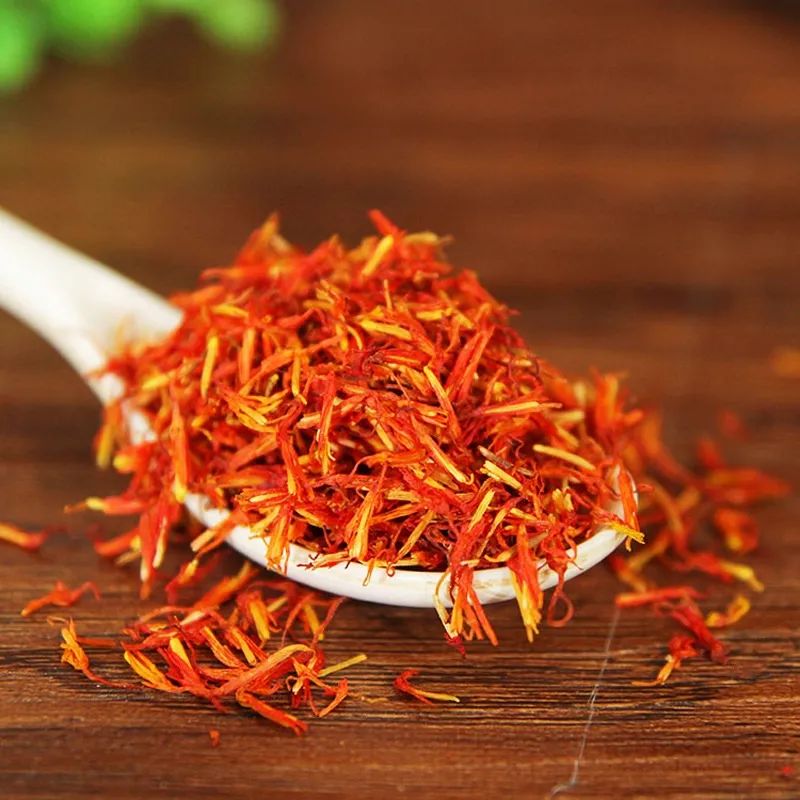
7. For chronic ear discharge with foul odor: use 1 part Honghua and 2 parts white alum (burnt to ash). Grind the above herbs into a fine powder, use a small amount in the ear. (From “Sheng Hui Fang”)
8. For trauma and wall injuries: use 1 part Chuanma, 2 parts Mu Xiang, 3 parts Honghua, and 4 parts licorice. All used fresh, ground into powder, taken with yellow wine. (From “Emergency Handy Formulas”)
9. For bedsores: use an appropriate amount of Honghua, soak in wine and apply externally. (From “Yunnan Chinese Herbal Medicine”)
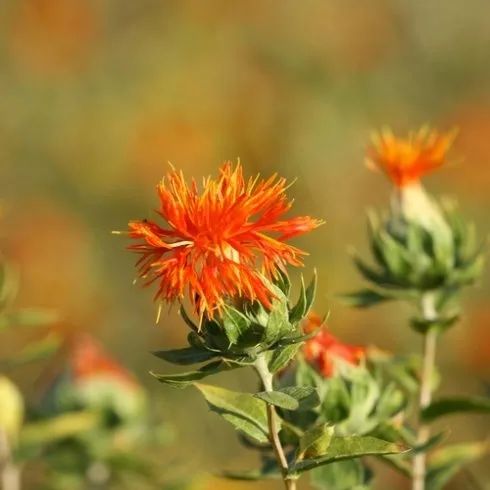
Literature Excerpts
1. “Chinese Herbal Medicine”
[Effects] Activates blood and dispels stasis.
[Clinical Applications]
1. Used for symptoms such as masses, sores, swelling and pain, trauma, rheumatic pain, menstrual irregularities, amenorrhea, and postpartum pain.
Honghua is spicy, dispersing, and warm, primarily used to dispel stasis rather than activate blood, making it a key herb for treating blood stasis, especially commonly used by women for regulating menstruation. In compatibility, this herb is often used with Tao Ren (Peach Kernel) for activating blood, and with Dang Gui, Chuan Xiong, and Bai Shao for blood activation; for dispelling stasis, it is combined with San Leng, E Zhu, Da Huang, and Chong Wei.

3. For dark-colored rashes.
This herb can also be used for measles that have receded, or for heat stagnation and blood stasis, where the rash color is not bright red, utilizing its blood-activating and stasis-dispelling properties, it can be combined with Dang Gui, Zi Cao, and Da Qing Ye for cooling blood, dispelling heat, and detoxifying.
In recent years, this herb has been used to treat coronary heart disease and angina, often combined with Dan Shen, Chuan Xiong, and Chi Shao; for thromboangiitis obliterans, it is used with Dang Gui, Tao Ren, Chi Shao, and Ru Xiang.
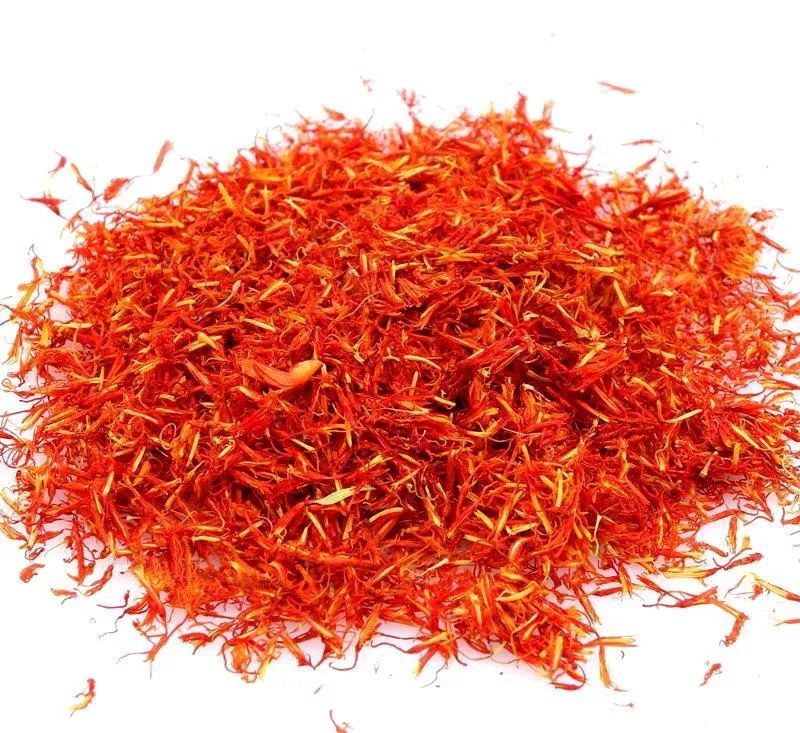
[Related Herbs] Saffron: also known as Zang Hong Hua (Crocus sativus). The dried stigmas of the herbaceous plant of the Iridaceae family. It has a sweet, cold nature. Its effects are similar to Honghua, and its clinical applications are also largely the same, with additional cooling blood and detoxifying effects, suitable for warm diseases with heat entering the blood level and for high fever in rashes. The general dosage is 1-3 grams, decocted. Due to its scarcity and high price, it is less commonly used clinically.
2. “Pearl Bag Supplement on Medicinal Properties”
Honghua, spicy, warm, and non-toxic. It has four uses: expels evil blood from the abdomen; replenishes deficient blood; eliminates postpartum blood stasis; and stops blood-related dizziness.
3. “Medicinal Compendium”
Enters the Liver channel. Breaks stasis, activates blood, moistens dryness, reduces swelling, and alleviates pain. Treats amenorrhea and difficult labor, and blood stasis from smallpox. Overuse can cause blood to flow excessively. Best used with wine.
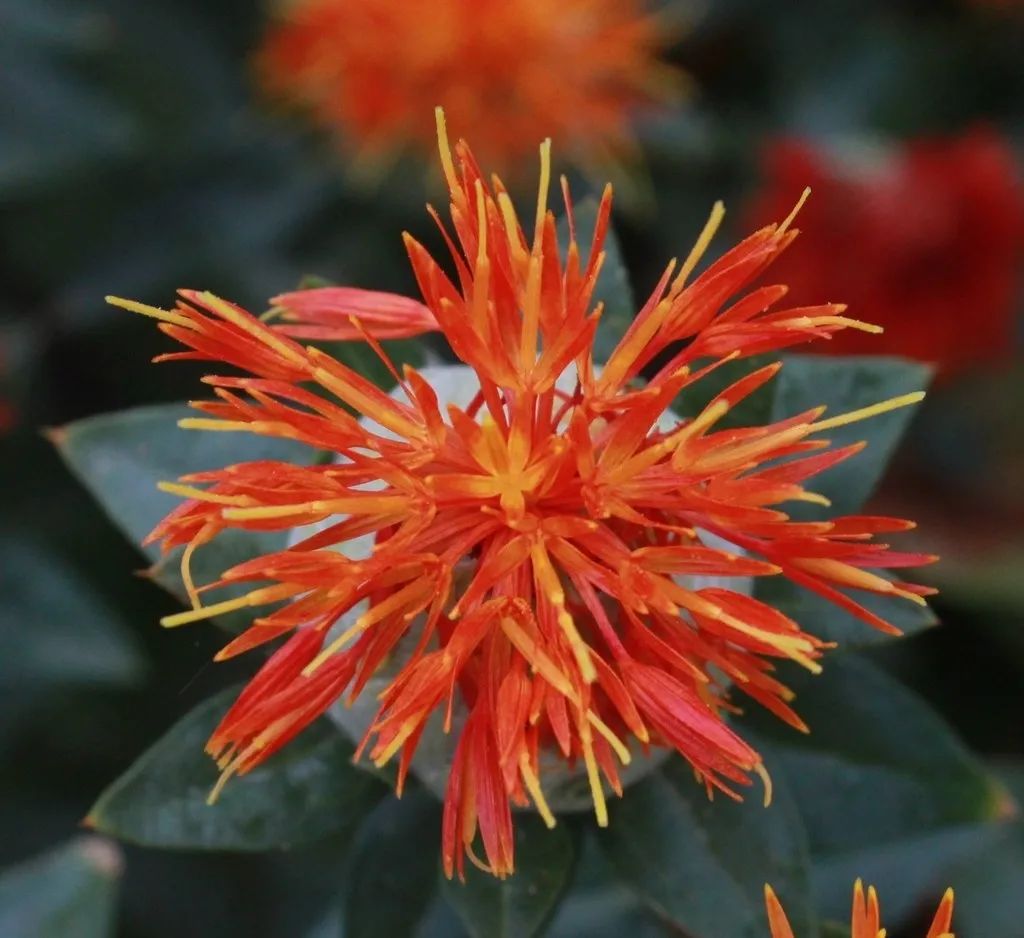
4. “Medicinal Properties Explained”
Spicy, warm, and non-toxic, enters the Heart and Liver channels. Expels evil blood from the abdomen and replenishes deficient blood. Eliminates postpartum blood stasis and stops blood-related dizziness. Treats trauma, sore swelling, elderly blood deficiency with constipation, and amenorrhea. Best used with wine; its sprouts can be mashed and applied to swellings, and the seeds can be swallowed to prevent smallpox.
Note: Honghua descends to the blood sea, suitable for entering the foot Jueyin to expel blood. It is said that bitter warmth is the Yang among Yin, thus it also enters the hand Shaoyin to nourish blood, but it excels at moving blood. To nourish blood, it should be used sparingly, or combined with tonifying agents.
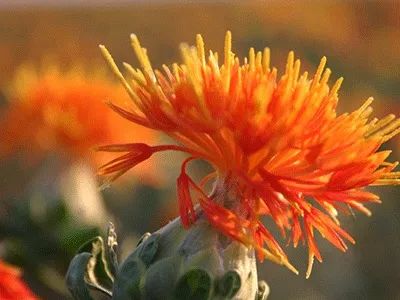
6. “Herbal Compendium”
Best used with wine. Spicy, sweet, and bitter, warm. Enters the hand Shaoyin and foot Jueyin blood levels. Breaks blood stasis, promotes new blood, disperses swelling, and alleviates pain. (Blood circulation stops pain.) When paired with Dang Gui, it activates blood. When paired with Rou Gui, it disperses stasis. Overuse can cause blood to flow excessively. Use with wine for cooking. For nourishing blood, use less, and cook with water. Avoid excessive use postpartum to prevent uncontrolled bleeding. The seeds can be swallowed to prevent smallpox. For black and sunken smallpox, use seeds soaked in wine, dried, and lightly roasted for use.

7. “Herbal Truth Seeking”
Honghua (specifically enters the pericardium and liver). Spicy, bitter, and warm. Red in color, enters the blood. It is a key agent for promoting blood circulation and breaking stasis. (Blood that is clear descends. If the blood is turbid, it is due to heat and dampness. Bright red blood belongs to fire, while black blood belongs to dryness. Blood that descends with excrement belongs to accumulation. If blood comes from the urine, it is due to Yin deficiency and fire movement, or due to excessive sexual activity. If blood is dark and dull, and the pulse is deep and slow, it indicates deficiency cold in the lower source. Yang deficiency leads to Yin movement. Vomiting blood that is purple and congealed indicates severe heat. Therefore, it appears turbid. Severe heat causes blood to appear black and purple. Blood that comes from sweat indicates fire. Joy harms the heart. Joy disperses Qi, thus blood moves with Qi. Blood in feces indicates near blood, which comes from the large intestine. Blood after feces indicates distant blood, which comes from the lung and stomach. Due to Qi deficiency and thin intestines, blood seeps in and flows out. Blood that comes from the mouth and nose indicates Yang excess and Yin deficiency. There is ascent without descent.) Blood is generated in the pericardium and stored in the liver, belonging to Chong and Ren. If there is an external evil invading internally, blood stagnates and does not flow. The juice of Honghua is similar to blood, thus it treats all blood dryness and throat obstruction. If smallpox does not appear, or if the skin is swollen and painful (due to blood heat and stasis), amenorrhea is difficult. (Amenorrhea can be due to blood stasis or blood deficiency, but this stops at blood stasis.) Blood dizziness and mouth closure. Fetal death in the abdomen.
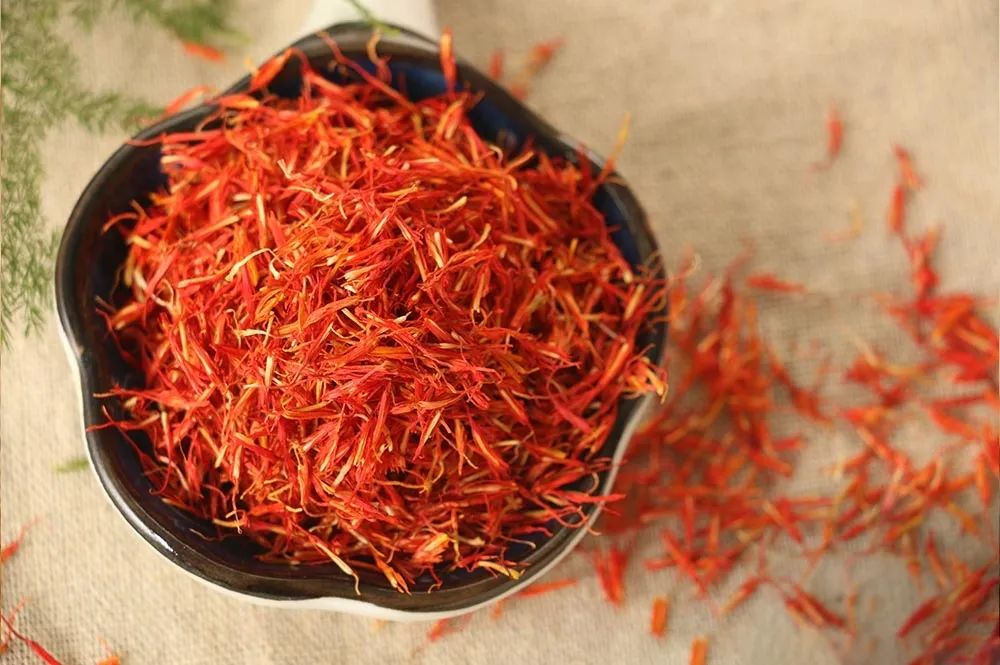
To treat, this should be used to promote circulation. (Shizhen said: The juice of Honghua is similar to it, thus it can move men’s blood vessels and women’s menstruation. More use promotes blood flow, less nourishes blood. According to the “Nourishing Notes”, Xu’s wife in Xinchang suffered from postpartum dizziness and died. However, there was slight heat in the chest. Renowned physician Lu said it was blood obstruction. It was necessary to obtain dozens of pounds of Honghua to save her. Thus, it was urgently purchased, boiled in a large pot, and the soup was placed under the window frame for the woman to sleep above. When the soup cooled, it was added again. After half a day, she revived.) However, it should not be used excessively. Less use aligns with Dang Gui for nourishment. More use allows blood to flow. Excessive use can cause uncontrolled bleeding and death. Yanzhi is dyed from Honghua and can treat children’s ears. (Use 10.5 grams of Honghua and 25 grams of burnt alum, grind into powder, and blow into the ear. If there are no flowers, use branches and leaves. One formula omits alum.) It also detoxifies and reduces swelling from smallpox. (If smallpox is broken, applying oil from Yanzhi is effective.)

8. “Herbal Classics Explained”
Spicy, warm, and non-toxic. It is primarily used for postpartum dizziness and mouth closure, abdominal evil blood not fully expelled, fetal death in the abdomen, and can be taken boiled in wine. It is also used for toxin. Honghua is warm and belongs to the wood energy of spring. It enters the foot Jueyin liver channel. Its spicy and non-toxic nature derives from the metal flavor of the western earth. It enters the hand Taiyin lung channel. Both flavors rise, indicating Yang. The liver is the organ that stores blood and is the channel of life. Postpartum, the liver blood does not store; if the liver is dry, wind rises, leading to blood dizziness and mouth closure. To treat wind, first treat blood. When blood flows, wind naturally disappears. Honghua is spicy and warm, moistening blood, thus it is the main herb for this. Abdominal evil blood not fully expelled and fetal death in the abdomen are due to cold blood not moving, unable to nourish the liver. Honghua is spicy and warm, activating blood and promoting liver function, thus it is the main herb for this. Boiling in wine utilizes the blood-activating and moistening properties of wine. It is also used for toxin, as its spicy and warm nature disperses and can resolve toxins.
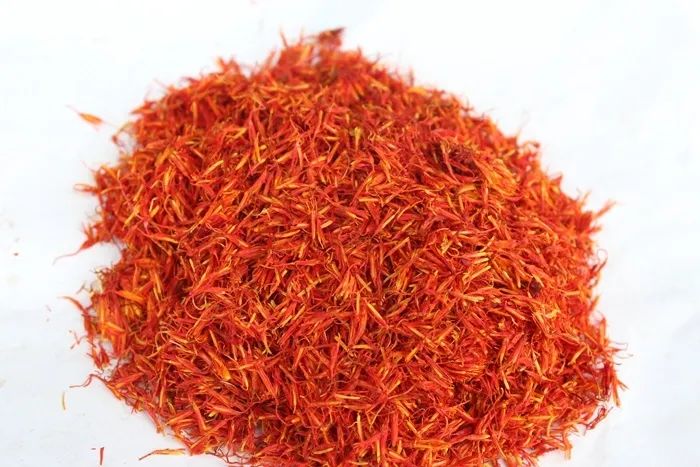
9. “Herbal Classification”
Spicy, sweet, and bitter, warm, enters the liver channel, breaks stasis, activates blood, moistens dryness, reduces swelling, and alleviates pain. Overuse can cause blood to flow excessively. Yanzhi activates blood and detoxifies smallpox. Jiangwei can obtain the power of Honghua to nourish blood while using silkworms to move through the meridians, making it most suitable for those with deficiency and blood stasis.
10. “Herbal Essentials”
Spicy, enters the hand Shaoyin channel, specifically activates blood and reduces swelling. It is effective for treating various types of wind and for replenishing new blood. Yanzhi activates blood and detoxifies. For smallpox, if broken, applying oil from Yanzhi is effective. Overuse can cause blood to flow excessively.
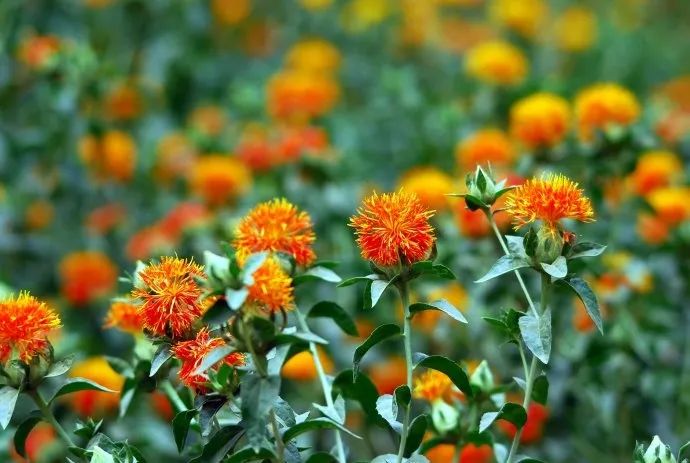
11. “Herbal Compendium”
Spicy, bitter, sweet, warm. Enters the lung channel and breaks blood stasis, activates blood (stasis moves, blood activates. If there is heat accumulation in the middle, and purple-black blood is violently vomited, it is good to expel. If not fully expelled, add Tao Ren and Honghua to promote movement. Generally, fresh blood should stop, while stasis blood should move.) Moistens dryness, reduces swelling, and alleviates pain (if blood heat and stasis occur, it leads to swelling and pain). Treats amenorrhea and difficult labor, fetal death in the abdomen (without activating blood and moving blood, it cannot descend), blood heat from smallpox (the compendium does not mention treating smallpox), throat obstruction. It can also enter the heart channel, generating new blood (must be combined with tonifying herbs). Commonly used for dyeing red and making Yanzhi (activates blood and detoxifies. For smallpox, if broken, applying oil from Yanzhi is effective). Less use nourishes blood, while more promotes blood flow; excessive use can cause uncontrolled bleeding and death (blood is generated in the pericardium, stored in the liver, belonging to Chong and Ren. The juice of Honghua is similar, thus it treats blood diseases. There are cases of postpartum blood obstruction leading to death; renowned physician Lu used dozens of pounds of Honghua to boil soup, placing the woman above to inhale the steam. When the soup cooled, it was added again, and after half a day, she revived. “Jin Kui” mentions Honghua wine, which treats women’s sixty-two types of wind conditions).
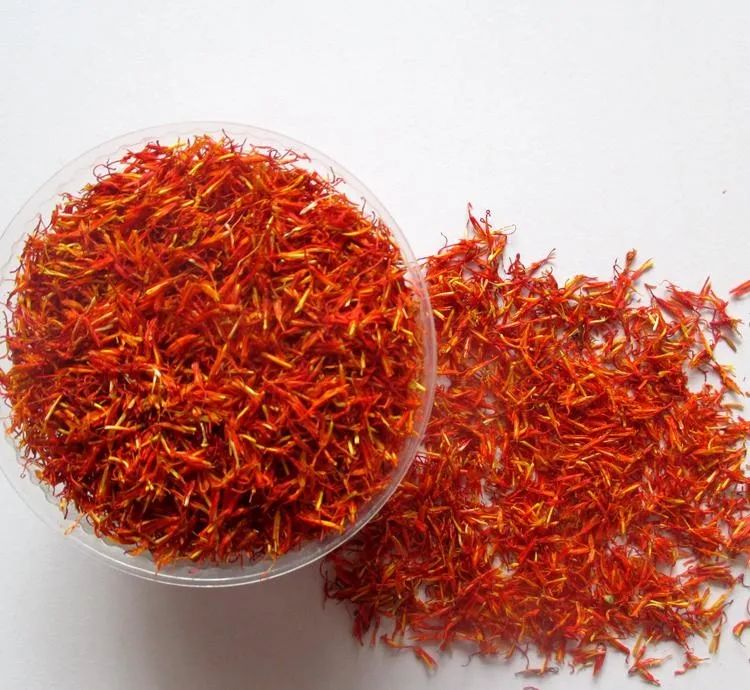
This content is for educational exchange only. For medication, please follow medical advice; for harvesting and selling medicinal products, please strictly adhere to national laws and regulations.
Text in images may contain errors; please feel free to comment and discuss.
Images sourced from the internet; please delete if infringing.

